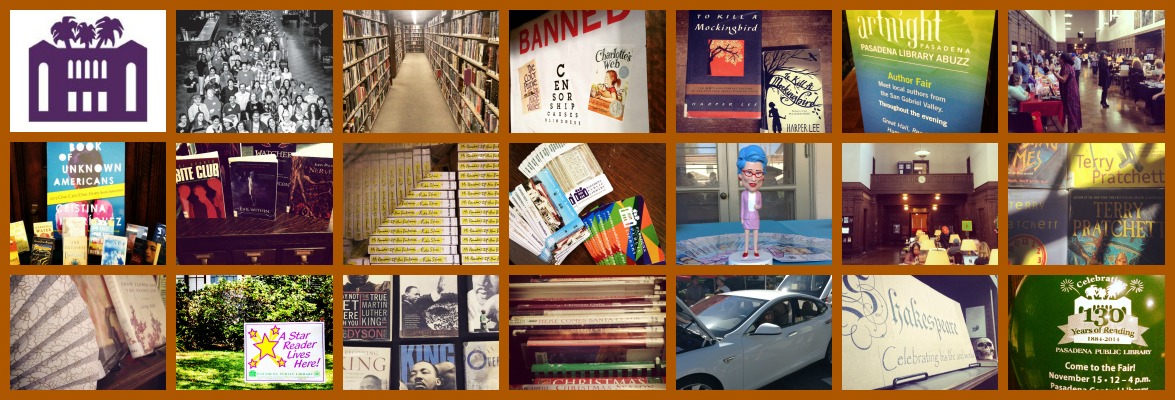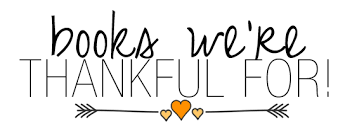‘Tis the season for reflection and giving thanks, and there are many things to be thankful for—family, friends, experiences that have enriched our lives, challenges that have changed our lives, and books that have made a difference in our lives.
Reading can be a transformative experience, and books can leave an indelible mark on our hearts and minds and readjust our perspective on life. For this blog, your friends at the Pasadena Public Library share what books they’ve read that have inspired them and which continue to give them joy or remind them of life’s simple pleasures. These are some books that have played an important part in our lives and for which we’re thankful.
 Shauna ~ Far From the Tree: Parents, Children, and the Search for Identity by Andrew Solomon
Shauna ~ Far From the Tree: Parents, Children, and the Search for Identity by Andrew Solomon
By far one of the most important and profoundly affecting books I’ve ever read. Andrew Solomon, who won a National Book Award for his 2001 book The Noonday Demon: An Atlas of Depression, spent a full decade conducting interviews with families and doing research for Far From the Tree. His central theme and thesis of his work is in exploring the identities that we do not share with our parents—transgender; Deaf; autism spectrum; children who are prodigies; children with Down Syndrome; and children in circumstances less “neutral” such as children who commit serious crimes. Solomon writes about how families cope, love, and accept, ultimately thriving in what can seem daunting or insurmountable.
When I read this 750-page book (Solomon’s ten years of work results in a book with tremendous breadth and a bit of a doorstopper in size), I very nearly couldn’t put it down. I mentioned it for weeks to everyone I talked to, and wrote to Solomon to thank him for it—after a lifetime of avid reading, it is the only time I have ever written to an author as a fan, and I have read, enjoyed and loved many, many books!
I am grateful for this book because it creates a profound space for understanding and compassion for all of us who live perhaps very different experiences from one another, while reminding us how we are each unique and still alike we all really are, particularly when we sometimes struggle to find common ground. I can’t recommend Far From the Tree highly enough, and wish everyone would read it.
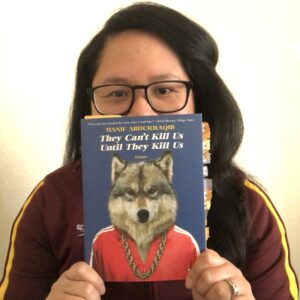 Trishia ~ They Can’t Kill Us Until They Kill Us by Hanif Abdurraqib
Trishia ~ They Can’t Kill Us Until They Kill Us by Hanif Abdurraqib
Also in e-book
I’m thankful for this book, which is a phenomenal essay collection that left me in awe. Abdurraqib’s deeply perceptive and poignant writing makes pop culture personal but also elevates it to social commentary about current events and the world around him. From My Chemical Romance to Carly Rae Jepsen to Notorious B.I.G., music is a central theme for many of the essays, but readers don’t have to be familiar with the group/artist to appreciate the connections he draws to larger topics: race, grief, love, and heartbreak. This collection, which I first checked out from the library, introduced me to a can’t-miss writer, and for that I’m grateful too.
 Christine ~ Horse by Geraldine Brooks
Christine ~ Horse by Geraldine Brooks
Also in e-book
Beautifully written by Geraldine Brooks—Pasadena Public Library’s 10th One City, One Story author for People of the Book—Horse tells the story of a discarded painting in a junk pile, a skeleton in an attic, and the greatest racehorse in American history: from these strands, the Pulitzer Prize winner author writes a sweeping story of spirit, obsession, and injustice across American history.
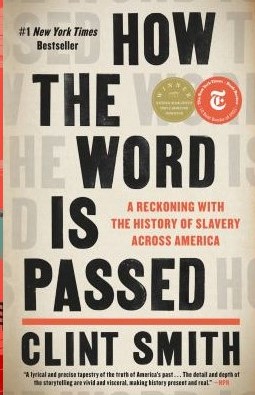 Sasha ~ How the Word is Passed by Clint Smith
Sasha ~ How the Word is Passed by Clint Smith
Also in e-book
How the Word is Passed is an essay collection that explores the history of seven different locations and their connection with slavery in America. Each essay focuses on a separate location and is connected through themes of American history, Black history, and the history of slavery. Throughout the book, historical documents, site visits, and interviews unveil a complex story of how throughout America we reckon with or avoid the history of slavery.
Personally, I’ve always struggled with reading nonfiction. I recognize its value from an informational standpoint, but the words bound in the pages of nonfiction never really sang with the beauty and dexterity found in fiction and poetry. So naturally, I devoured fiction and poetry at every turn, greedily consuming story after story, and avoided nonfiction entirely. Until one of my all too frequent reading slums caused me to reevaluate my reading selections and pick up a nonfiction book. Surprisingly I found myself truly enjoying the information and the medium but it lacked the addictive quality of silken sentences dripping with imagery that I flock to fiction for. And then a podcast I regularly listened to mentioned this book, an essay collection about history and remembrance written by a poet. I had high hopes and was not disappointed. Everything about this book captivated me, from the subject matter to the philosophical musing to the sentence structure and word choice, I was enamored. This book deepened my appreciation for how we discuss and write about our lives. The words we use, the stories we highlight or dismiss, and the names we give to places and people, all intrinsically shape the world that we live in. I am grateful for the connections this book gave me to a personal history I’ll never fully know and thankful for the display of the power of language to reshape a narrative.
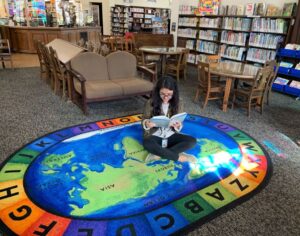 Pam ~ The Little Prince by Antoine de Saint-Exupéry
Pam ~ The Little Prince by Antoine de Saint-Exupéry
Also in e-book
The Little Prince is one of those books that you won’t regret reading. It’s one that touches your heart and in my case made me think of what is really important to me. I read this book first as a child and then later when I was in college. I honestly don’t think I would be here working in libraries if it weren’t for this book. The book in a way made me take a closer look into the direction of my life and what I really wanted to spend my life doing. Although I know I still have a lot to learn and a lot to build here in our library, I know that it will be a great journey because my heart belongs in public libraries. I would like to end this entry with two of my favorite quotes from the book, “And now here is my secret, a very simple secret: It is only with the heart that one can see rightly; what is essential is invisible to the eye.” And lastly, please remember, “The most beautiful things in the world cannot be seen or touched, they are felt with the heart.”
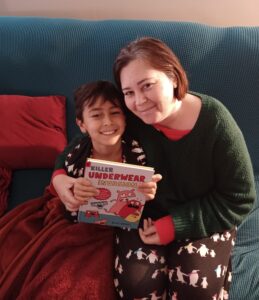 AnnMarie ~ Killer Underwear Invasion!: How to Spot Fake News, Disinformation & Conspiracy Theories by Elise Gravel
AnnMarie ~ Killer Underwear Invasion!: How to Spot Fake News, Disinformation & Conspiracy Theories by Elise Gravel
Also in e-book
As both a parent and a librarian, teaching my children about information literacy is important to me—so when I saw a graphic nonfiction book that teaches this to kids in a funny way, I had to check it out! I am so thankful Elise Gravel (author of the Olga series and many cute nonfiction comics) wrote and illustrated this book, Killer Underwear Invasion!: How to Spot Fake News, Disinformation and Conspiracy Theories. My 3rd grade son and I read it together and laughed a lot! The silly alien-like characters are so easily duped by fake news, conspiracy theories, and disinformation, yet the narrator shows how we are all susceptible to these various types of disinformation because of how humans think and how we form our beliefs. Parents and caregivers, I recommend reading this book together with your child and helping him or her unpack big words like “confirmation bias.” I am grateful for books like this that give us adults a way to help our children navigate this difficult information landscape with a fun resource for starting the conversation.
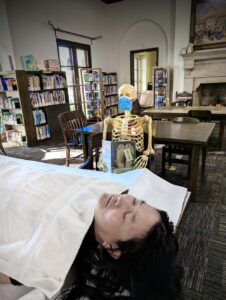 Young ~ Stiff by Mary Roach
Young ~ Stiff by Mary Roach
Also in e-book
Stiff was the book that first introduced me to the quirky and comically educational writings of Mary Roach. Many years ago I came across Dead Janitors Club, a book about crime-scene cleaning by Jeff Klima, and that piqued my morbid curiosity and soon I was enthusiastically reading a bunch of books about forensic science, crime scene investigations, and the people who deal with the aftermath of unnatural deaths. Among books such as Mop Men (Emmins, 2008), Aftermath, Inc. (Reavill, 2007), Death’s Acre (Bass, 2004), Dead Center (Ribowsky, 2007)—to name a few—Stiff was perhaps the most fun to read, and that might be an odd thing to say considering the macabre subject matter. The book is an exploration of the curious lives of our bodies postmortem and answers questions some of us might have about bodies that are donated for scientific research. However, it’s more than just about cadavers and their use in medicine and forensic science; Roach also delves into the bizarre and macabre topics that include decapitation and how long a head remains conscious after being guillotined, head transplant experiments, medicinal cannibalism, and the crucifixion experiment to help study the Shroud of Turin. Her approach to scientific inquiries is entertaining, yet the answers and her own observations she shares with us are very informative and fascinating, and that’s what makes this book so fun to read.
I’m thankful for this book because it reminded me of the joys of reading when I first read it. I really enjoy nonfiction, and the ones I generally read have a more serious tone, maybe a bit dry but nonetheless very interesting. Stiff was a refreshing read on a topic that can be a sobering reminder that we all will shuffle off this mortal coil. It’s full of fun facts and cheerfully morbid. Roach combines humor and intellectual (as well as morbid) curiosity in this book and all her other books, many of which I’ve also read.
